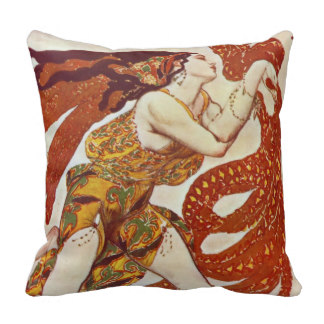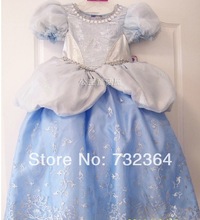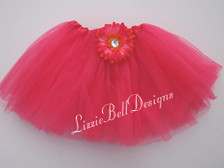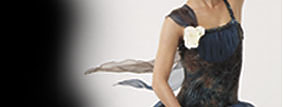Ballet Costumes
 The drama, the music, the theatrical setting and the audience’s anticipation all come together at a ballet recital. Having the most striking ballet costumes will turn a great performance into an extraordinary one.
The drama, the music, the theatrical setting and the audience’s anticipation all come together at a ballet recital. Having the most striking ballet costumes will turn a great performance into an extraordinary one.
For those who cherish the dance form not just as performers but also as spectators, ballet is a religion. The dominant presence of French words in ballet vocabulary is often misinterpreted as the underlying evidence of the origin. He was a dance master famous for his proficiency in various Italian folk dances. Although these parties were arranged with an aim of informal politics, they did in fact have a huge influence on ballet as we know today.
more...
Ballet Dance Costume
The main purpose of a ballet dance costume is to harmonize with the themes explored by the dance. Catherine, being an art connoisseur, promoted ballet in her parties and also provided financial support. In 1573, when Charles IX was King of France, Ballet des Polonais was performed for the Polish Ambassador. In 1581, another of Balthasar’s choreographed ballet was performed in the court of Catherine de’ Medici. Over twenty-four dancers performed the five-hour long ballet based on the story of mythological Greek goddess, Circe. It was the first ballet to have a printed account and was published in 1582 as The Ballet Comique de la Reine by Balthasar.
It is well-known in the history of ballet for its dramatic enactment and elaborate costumes. The art of ballet began to be considered as worthy for every aristocratic celebration across the continent. As a young prince, he was attracted to ballet and debuted at the age of 14 as Apollo, the Sun God, in a ballets de cour – Le Ballet de la Nuit (The Ballet of the Night). Impressed by her talent, Louis XIV started training in formal ballet under her. The King’s interest in ballet popularized the art form, and it became part of everyday life in the country.
Louis Hesselin choreographed the twelve-hour ballet and parts of Louis XIV performance to flaunt his shoes, which laid the foundation for the first five positions of ballet as documented by Pierre Beauchamp. Aristocracy in Europe was largely impressed and began active participation in ballet. During King Louis XIV’s reign, ballet flourished in France and the neighboring countries. Professional dance troupes were formed, which traveled to increase awareness and entertain people. Soon enough, men, who once ruled the dance form, became supporters and were included in the ballets to aid the ballerinas.

The advent of 18th century brought some changes in the age-old ballet and set the wheels in motion to completely revolutionize the dance form. Until the late seventeenth century, male dancers performed the feminine roles, as the ballet costumes were heavy and required strength. Raoul Auger Feuillet wrote Chorégraphie, ou l’art de décrire la danse which described in detail, the steps, positions, and techniques of ballet as prevalent at that time and are still followed. Petipa together with composer Tchaikovsky choreographed The Nutcracker and The Sleeping Beauty.
Lettres sur la danse, et sur les ballets, one of the greatest works of Jean-Georges Noverre, emphasized that ballet was a dance of expressions and therefore must be performed by the dancer with absolute use of the entire body. Because of the lean and light bodies of ballerinas, choreographers expanded on the ideas of the dancers floating in air like a feather and landing perfectly on the toes. Although France was considered home to ballet, Venice became the dance center of Europe, largely due to the Venice Carnival. Perhaps the most important element of your ballet dance costume are your ballet shoes.
Many dancers from around the world came to participate in the carnival, and thus several ballet performances took place in the carnival, making Italian ballet techniques a favorite among most of southern Europe. The boxed toe shoe that every ballerina wears today was invented to support the leg movements as a result of development of new techniques in ballet. Ballet Russes, a ballet company founded in 1909 by Sergei Diaghilev, brought back ballet to Paris.
During the same time, ballet was becoming popular in Russia and Denmark due to talented and dedicated dance masters, like August Bournonville, Jules Perrot, Arthur Saint-Léon, and Enrico Cecchetti. He fused the French and Russian ballet in Russian folklore-the Firebird and the Petrushka. Meanwhile, back in Russia, ballet was developing under the Soviet rule, but at a very slow pace. He broke the age-old dance and narrative style of ballet, as he thought that any dance form must be the result of free thinking.
more...
 The drama, the music, the theatrical setting and the audience’s anticipation all come together at a ballet recital. Having the most striking ballet costumes will turn a great performance into an extraordinary one.
The drama, the music, the theatrical setting and the audience’s anticipation all come together at a ballet recital. Having the most striking ballet costumes will turn a great performance into an extraordinary one.


